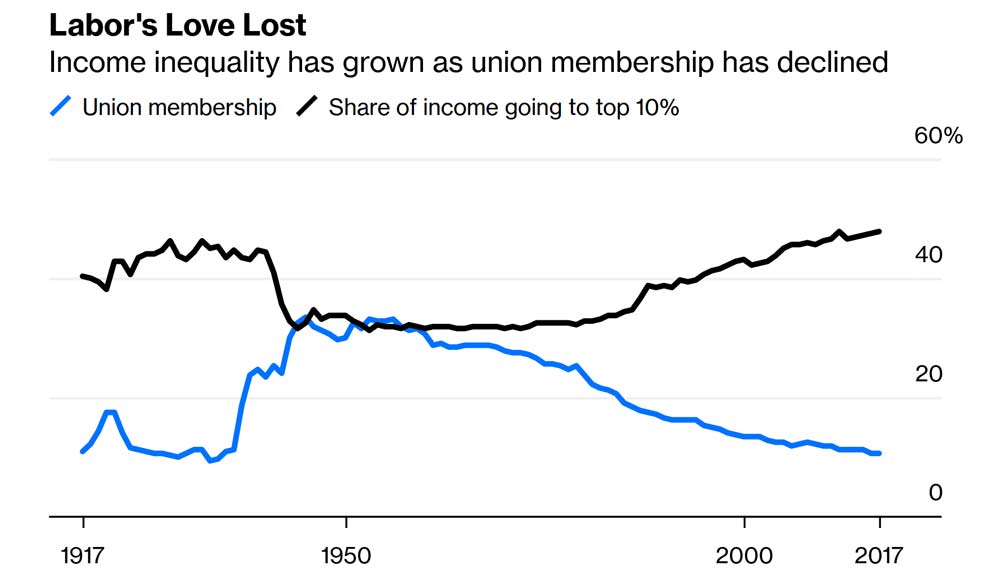From Bloomberg Opinion columnist Joe Nocera:
Labor is having a moment the likes of which it hasn’t experienced in decades.
In Joe Biden, the labor movement has the first full-throated, pro-union president since Harry Truman. A drive to unionize Amazon.com Inc. warehouse workers in Bessemer, Alabama, is being watched closely as a possible harbinger of a broader effort to unionize nonmanufacturing industries. And earlier this month, the House passed the most sweeping pro-union piece of legislation in nearly a century, the Protecting the Right to Organize Act, which seeks to strip away some of the advantages companies have long had in successfully fighting off organizing drives.
There is no doubt that the U.S. needs a revived labor movement. According to one important study, between 1973 and 2007, labor’s decline accounted for 30% of the rise in income inequality among men and 20% for women. If the country hopes to rebuild the middle class and reduce income inequality, it simply has to do more to push the percentage of private sector workers who belong to unions, which stands at 6.3%, closer to the public sector rate, which is five times greater and lifts the overall number to 10.8%. What is less clear is whether this moment turns into anything more than, well, a moment.
There is reason for optimism. Celine McNicholas, the director of government affairs at the Economic Policy Institute, a worker-focused policy group, pointed to a recent Gallup poll showing that 65% of Americans approved of labor unions, up from 48% in 2009. According to McNicholas, the number of young people who are pro-union is even higher. “Younger workers have none of the outdated hang-ups,” she told me.
There’s another cause for optimism: The liberal intelligentsia is embracing unions again. The connection between unions and inequality has become too glaring to ignore anymore.

